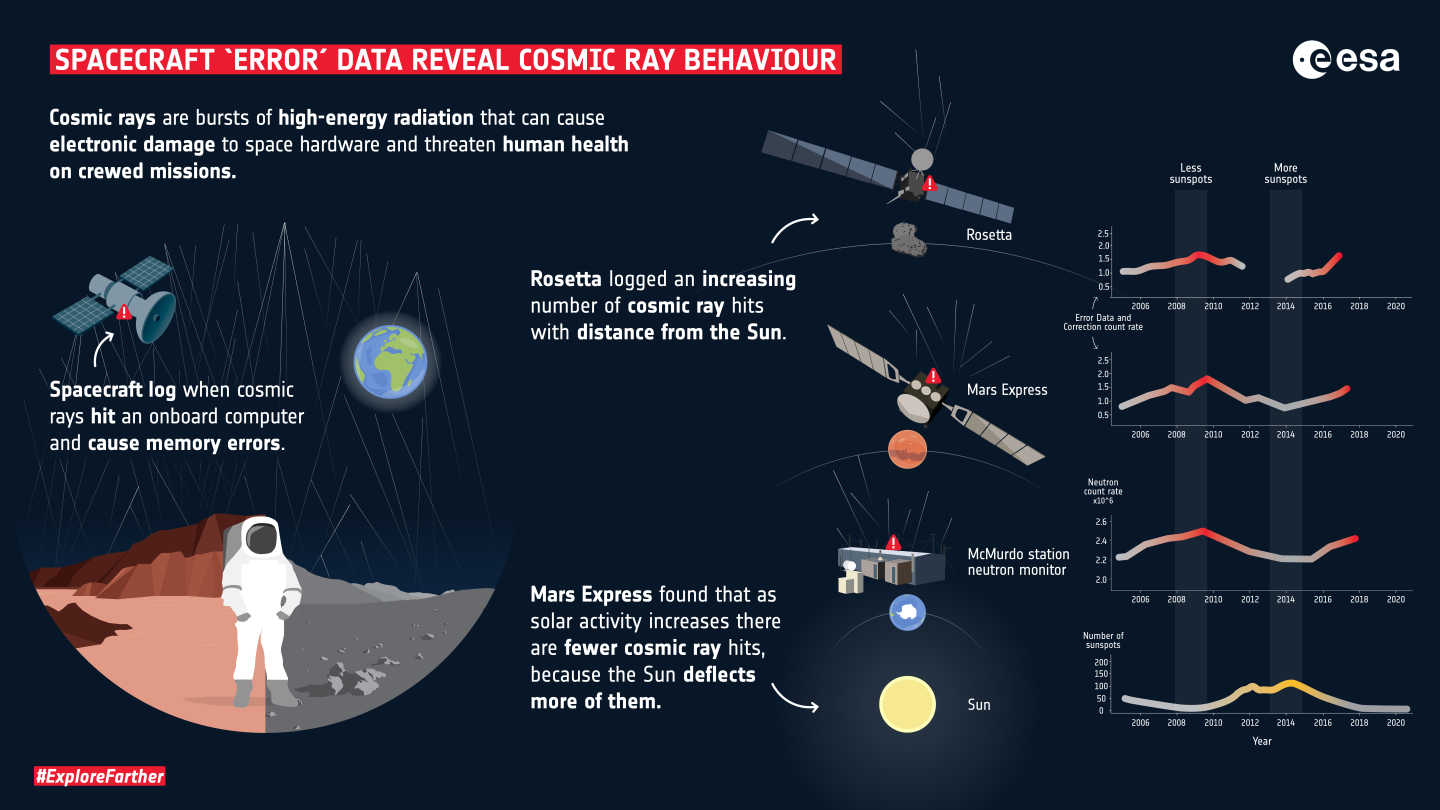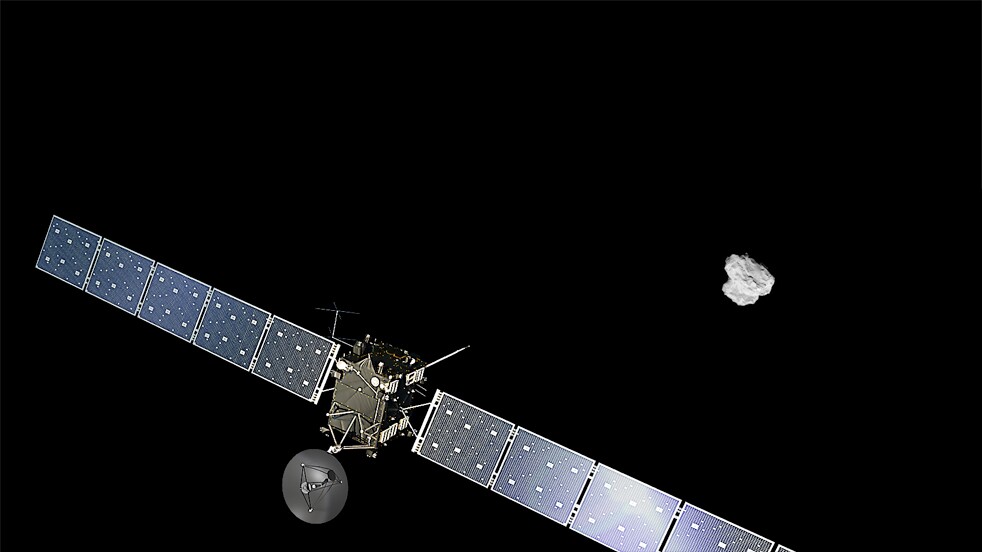By studying the logs of computer malfunctions caused by high-energy particles striking their circuitry, ESA scientists have used "housekeeping" data from the Rosetta and Mars Express deep-space probes to shed new light on cosmic rays in the solar system.
The Earth is constantly being bombarded by high-energy particles popularly known as cosmic rays that are streaming in from the outside the solar system. We're not troubled by them on the surface because the Earth is protected by its atmosphere and magnetic field, but they can be a serious hazard to space missions, especially ones that travel beyond low-Earth orbit.
Cosmic rays can damage microcircuitry, which means they can degrade components over time, so space agency engineers regularly monitor the health of spacecraft systems. One example of this general housekeeping is Error Detection And Correction (EDAC), which logs memory errors due to cosmic ray impacts so they can be compensated for.

The ESA team realized that as deep-space missions travel farther and longer, these logs can serve double duty as a way to measure variation in cosmic ray activity in different parts of the solar system over time. For the study, they looked at the housekeeping logs for the Mars Express mission from January 1, 2005 to September 17, 2020 and the Rosetta mission from January 1, 2005 until September 30, 2016.
This 15 years of data from two missions, one to Mars and the other to a comet beyond the orbit of Jupiter, is important because spacecraft send back diagnostic telemetry not only when they reach their destination, but also during their passage from Earth. This means it's possible to look at how cosmic rays vary in the inner solar system over the Sun's 11-year activity cycle, which can affect cosmic rays.
In addition, the data set allows scientists to analyze cosmic rays not only over time, but space as well by comparing the ray counts from the spacecraft and Antarctic observations on Earth, as well as at varying distances from the Sun. The measurements revealed ray counts increase by around five percent per astronomical unit (93 million miles, 150 million km).

"We found that cosmic rays behave very similarly with respect to the Sun at Mars as they do at Earth, and are strongly influenced by the solar cycle," says the study lead Elise Wright Knutsen. "As the Sun grows more active and hosts more sunspots, we see fewer cosmic rays, as our star deflects more of them. However, this anti-correlation is seen around 5.5 months later – it isn’t immediate – and the reason for this time lag remains an intriguing open question."
ESA sees theEDAC technique as has wider applications, including on the agency's Gaia, BepiColombo, and upcoming Juice (JUpiter ICy moons Explorer) missions.
The research was published in Astronomy & Astrophysics.
Source: ESA







